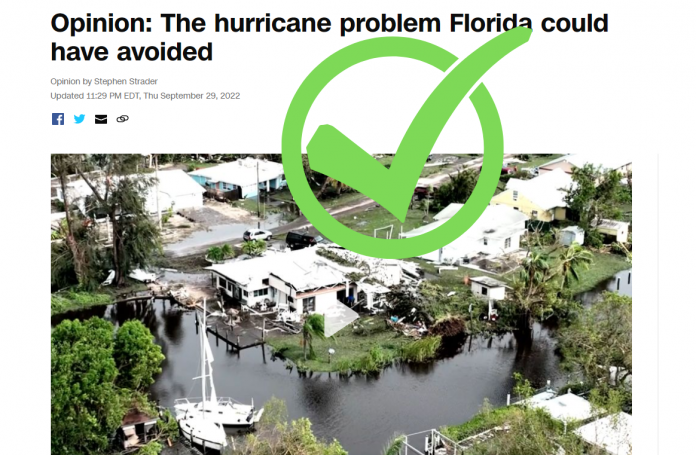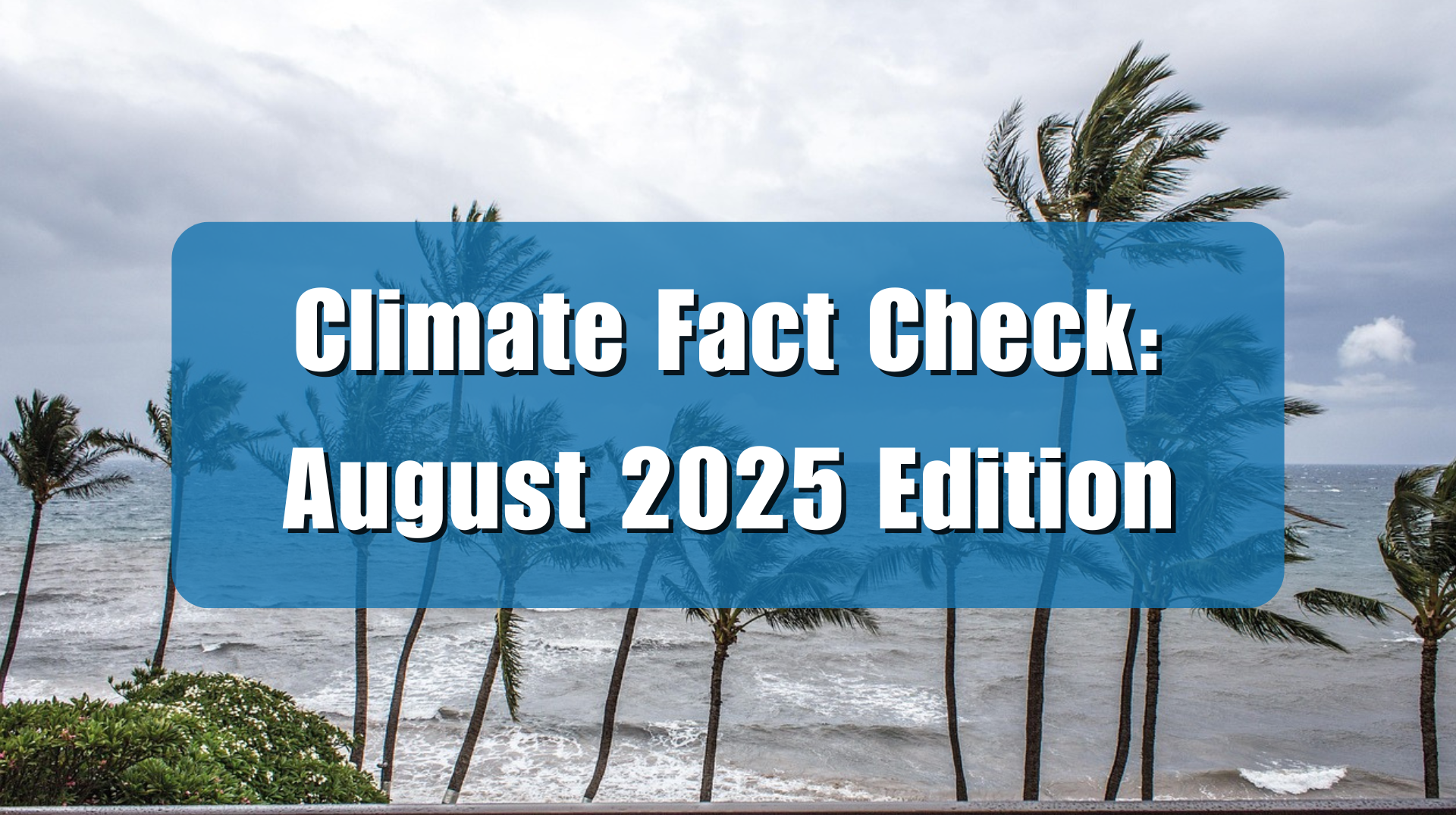Writing for CNN, Stephen Strader, a Villanova University geography and environment professor, attributes the large amount of damage Hurricane Ian caused to decisions made by individuals and politicians which have resulted large populations living along the Florida coast, not climate change. Strader is correct. There is no evidence Hurricane Ian was in anyway unusual in strength, or location of formation and landfall, thus climate change can’t be responsible for the number of lives lost and disrupted, or the high costs associated with it.
In the CNN opinion piece, “The hurricane problem Florida could have avoided,” Stephen Strader writes:
After hours of battling Hurricane Ian’s high winds, torrential rain and storm surges nearing 12 feet in some locations, residents are left to pick up the pieces. In the hours and days after Ian, the true destruction will be revealed….
Those residents who did not evacuate are facing life-threatening conditions, while emergency responders deal with an overwhelming volume of calls from those in need of help.
Unfortunately, this scene is all too common to the state of Florida.
Strader discusses how historical development along Florida’s Atlantic and Gulf coasts resulted in “unchecked population growth,” encouraged by developers:
replaced sponge-like natural wetlands and mangroves that protect the inland areas from storm waters with hardened, impervious surfaces that would go on to bear the brunt of hurricanes like Andrew and now Ian.
Unfortunately, this pattern of rapid development along both the Atlantic and Gulf coastlines has continued into the 21st century, setting the stage for disasters. For example, Florida’s population has grown nearly 60% since Hurricane Andrew, which is two times faster than the national average over that same time period, according to a US Census Bureau data analysis. With increasing population comes a greater number of homes. In fact, the number of homes in Florida has nearly doubled from 5.7 million in 1990 to 10 million in 2020, based on government data.
But why does this matter for hazard events like Hurricane Ian?
The simple fact is that when more people are exposed to a natural hazard such as a hurricane, the odds for a major disaster to occur are greater. As our population and built environment grows and expands, we are more readily placing ourselves in the harm’s way. The wetlands and mangroves that once acted as natural “buffers” to the rising waters and waves that come with hurricanes are now shrinking or gone. They have been replaced by subdivisions.
Strader is right. As explored in Climate Realism previously, here, for instance, rising nominal costs from hurricane damage, and the damage from other natural disasters, by the way, are due to what Bjorn Lomborg, Ph.D., and Strader himself calls the “expanding bulls-eye effect.” The increased costs of natural disasters in recent decades are due to communities increasingly expanding into areas historically prone to natural disasters, such as flood plains, forests, and coastal areas, erecting increasingly expensive structures and infrastructure there. As a result, when extreme weather events strike, more developed land and more expensive properties are destroyed.
Although Strader does not discuss it, the fact is government policies such as subsidized flood and hurricane insurance and disaster relief programs and loans, encourage people to move to areas prone to those natural disasters. Or, at least makes the decision to move to or reside in such locations easier.
Indeed, as noted in a National Center for Policy Analysis report, the National Climactic Data Center says that increased population and development of coastal areas is responsible for the increase in losses due to hurricanes. A Heinz Center report determined that in the absence of subsidized hurricane and flood insurance development density in areas at high risk of flooding would be about 25 percent less than in low-risk areas. Federal flood control and coastal erosion programs also contribute to growing coastal development in Florida and elsewhere. In short, when taxpayers in general are picking up the tab for hurricane and flood insurance, and are helping to pay for disaster recovery after the fact, property owners have less incentive to question their decision live along the coast, or whether to rebuild there after a hurricane strikes.
Kudos to CNN for publishing an article that largely avoids blaming climate change for the deaths and destruction inflicted by Hurricane Ian. Decisions made by people, business, and government institutions about coastal development, not purported human-caused climate change, are the factors that transform Ian, similar hurricanes, and other extreme weather events from dangerous “hazards,” into “disasters,” a distinction made by Strader.




















